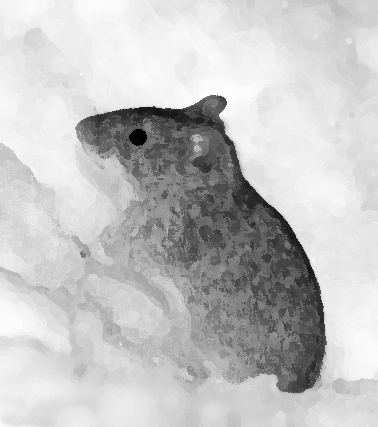Ferrell Mouse
| Animal Companion Training | Fauna Lore | Submit Research on a New Companion |

Research
Creature Name: Ferrell Mouse
Observations by: Thaylis Beign
Creature Type: Animal ((1308))
Creature Subtype: Rodent
CTS trainable: Yes (compatible with CTS).
Introduction
The Ferrell Mouse a small rodent found abundantly in and around Ferrell. Adults reach four or five inches in length, and weigh less than a half a pound. Coloration of their hair vary from light brown to gray to white on most of their bodies, while their belly tends to be a lighter shade. Little hair is found on their tails and ears, if at all. Ferrell Mice run, walk and stand on all fours legs, but when eating or fighting they stand only on the hind legs, supported by their tail. In addition, they have been observed as excellent swimmers.
Feeding Habits
Ferrell Mice are herbivores, consuming any kind of fruit, seeds, or grain they can locate. They have adapted well to living within civilized areas such as towns and cities, and are known for eating most all types of food scraps. Ferrell Mice consume and contaminate food in civilized areas, often cause extensive property damage, and are generally considered pests by the local population.
Disposition and Social Habits
The Ferrell Mouse appears to be territorial, with typically one male nesting with several females and young. After careful observation, I noted that dominant males avoid other territories unless provoked by other reasons.
Habitat
Ferrell Mice can be found in open fields, farms and the civilized areas of Ferrell. They are known to invade homes and other structures for food and shelter from the elements. Ferrell Mice appear to be mostly active during the hours of darkness, as this helps protect them from natural predators. They live in a wide variety of hidden places that are near food sources and construct nests from various soft materials.
Fylgia
Most compatible: Dire Rat
- The Ferrell Mouse and Dire Rat are cousins, both sharing many physical traits.
Other notes
Ferrell Mice are often preyed upon by larger predators such as cats, foxes, snakes, and birds of prey such as hawks, owls, and eagles. These rodents are common and wide-spread and are very similar, if not identical, to mice found in other parts of the continent.